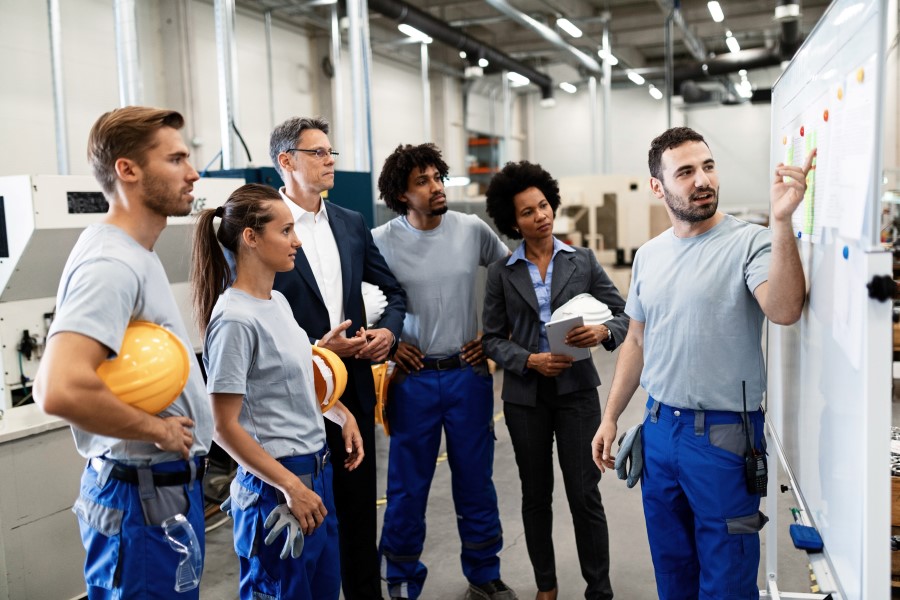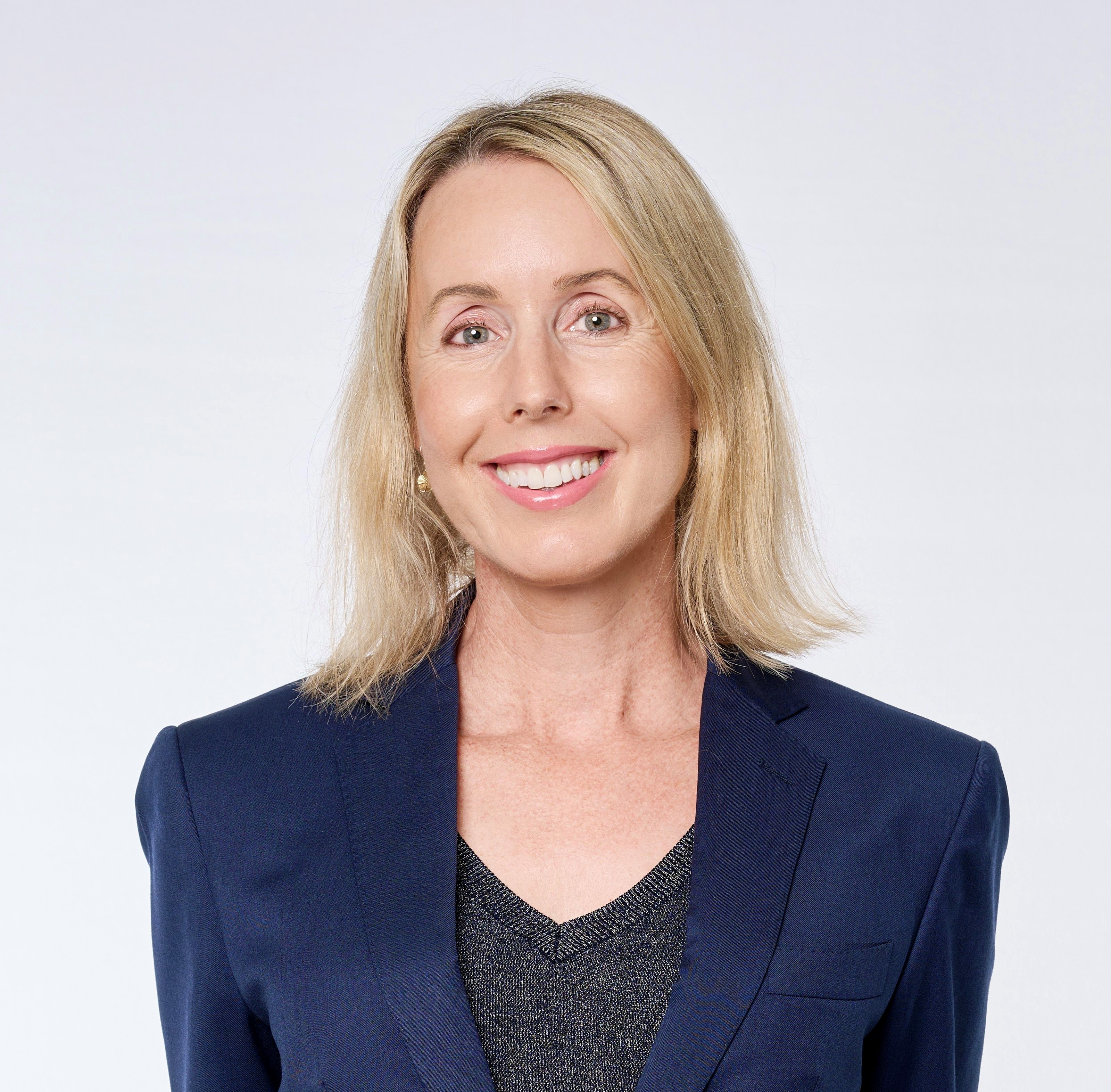
More than 50 per cent of businesses have challenges consulting with their people, a snap poll has revealed.
A lack of feedback and response from workers is the main obstacle, while poor support from managers and supervisors to embrace consultation is another major hurdle.
The findings were revealed in last week’s WHS Connect meeting about consultation with workers.
Panelists including:
shared their experiences with Ai Group’s WHS/Manufacturing Lead Mark Goodsell and National Manager - Work Health Safety Consulting Services Trinette Jaeschke.
“It’s important to manage consultation, both from a compliance and effectiveness point of view,” Mr Goodsell said.
“Consultation is fundamental to how modern safety regulation works but sometimes it can be forgotten or conducted in a way that is not as effective as it should be.”
The advantages of effective consultation are twofold.
“One is that you get better outcomes because the people doing the work often know things that managers and supervisors don’t know with regards to risks, particularly those that aren’t always manifested in accidents or injuries, such as near-misses,” Mr Goodsell said.
“Secondly, it can drive better compliance and engagement.”
Effective consultation is all about trust, says McConnell Dowell’s Grant Fuller.
“If you don’t have trust, you’re going to get nowhere,” Mr Fuller said.
“In the construction industry, there is almost an unconscious bias that we don’t speak up because you could get kicked off the job tomorrow.
“In my industry, if you are not getting feedback from employees, most of the time it’s because they don’t feel psychologically safe to do so. They feel ‘if I speak up, I will look silly’ or ‘if I speak up, it could end in some trouble for me or my work crew. I’m not going to dob them in.'
“You want to change that approach — that you’re not dobbing them in, you’re looking after them – and so are we. Together, we do that better.”
Mr Fuller said workers need to know that consultation is a priority for managers and supervisors.
“If you say you’re going to do your consultation at a certain time every week, make sure you’re there,” Mr Fuller said.
“All it takes is dropping the ball once or twice and workers feel it doesn’t matter anymore. If they feel it’s not important to you, it won’t be important to them.”
When a 2020 Safety Culture Survey showed workers were tired of raising issues and not getting feedback or not seeing a response or action, Thales turned to technology to boost engagement.
QR codes that workers can scan using their smartphones to provide feedback were introduced six months ago with much success.
The code reveals a link to a single question that asks workers to rate their level of satisfaction of safety practices on site to generate a net promoter score across the organisation. An optional free-text field allows for further feedback.
“We took a deliberate action to make it easier for people to provide feedback and make sure the businesses returned that feedback to the people who raised the issue,” Mr Goodman said.
“We’re able to get real-life, real-time feedback from the frontline.
“We’re providing that feedback directly at site level and it’s a responsibility for each of the site managers to provide that feedback to their workers. We follow up on that to make sure that is happening.
“We have always encouraged people to speak up; the focus is now on management to listen up.”
David Tiller, Ai Group’s National Manager, Training Services, agrees consultation is a two-way process.
“In training sessions on this topic, I talk about consultation, participation and feedback,” Mr Tiller said.
“It goes both ways. I see organisations struggle when they treat consultation as an event. On the other hand, it works well when management take off their armour and get some feedback that they’re comfortable with and when employees get feedback that focuses on the positive as well as the negative.”
McConnell Dowell sees much value in reinforcing good behavior.
“Every week, we start our committee meetings by going around the room and finding a positive,” Mr Fuller said.
“It starts the meeting on a better note. I highly recommend ‘disrupting the process’. Move away from the stale processes; keep the intent of those, obviously – but have a bit of fun with it.”
This approach has helped to improve workplace culture at McConnell Dowell.
“It has gained buy-in from across the board,” Mr Fuller said.
“From those who are cleaning the crib rooms and the lunchrooms all the way through to the engineering team, you get buy-in because they feel they are heard and therefore you get more discretionary effort out of them. You’re able to create a culture that is inclusive and has the whole team in it.
“That’s the approach I take to consultation: a team approach. We’re all on the same team. Full transparency is needed. Workers need to know why we are doing certain things and what’s the driver behind it.
“If you take that team approach, you can start to have a bit of fun with it. Instead of having that structured feel, you can still tick all the boxes you need to as far as requirements go, but you can have fun with it.
“Instead of the Health & Safety Committee, it can be the ‘Providing A Better Project team’. Something that has a team feel to it.”
McConnell Dowell also uses simple tech tools to help managers and supervisors support consultation.
“If a lack of support from management is a problem, you need to show them the facts,” Mr Fuller said.
“This can be difficult if you're not getting feedback from employees because they are saying: ‘We’re not even being asked; the process is broken’.
“You have to somehow source their feedback in other ways.”
Mr Fuller says the organisation has had success with apps such as Slido, which enables users to conduct live polls, quizzes and Q&As.
“Tools like this are great with crews who aren’t willing to speak up,” he said.
“Using the results, you can then take management on a journey of showing them how to support consultation instead of telling them they must.
“If your leadership isn’t showing commitment to things such as consultation, team culture and collaboration, it’s going to affect the business all the way down. It starts from the top.”
For those reluctant to embrace technology, a traditional whiteboard is just as effective, says Trinette Jaeschke, Ai Group’s National Manager - Work Health Safety Consulting Services.
And nothing beats face-to-face interaction.
“It’s all about dealing with people, getting that feedback and actively consulting with people in a way that makes them feel as though they have been heard,” Ms Jaeschke says.
“When you have that face-to-face contact with people, they take you more seriously. Trust will help you get feedback from people.”
Mr Goodman agrees.
“Leaders need to be visible and ask the right questions,” he said.
“You can’t beat walking the floor.”
The WHS Connect network covers a national and state jurisdictions enabling Ai Group members to share ideas and strategies; hear from industry stakeholders; access best practice models in WHS compliance and regulatory information; and enable proactive planning in WHS matters.
Click here for more information.
Consultation Part 2: Effective WHS consultation between businesses will be held later this year.

Wendy Larter is Communications Manager at the Australian Industry Group. She has more than 20 years’ experience as a reporter, features writer, contributor and sub-editor for newspapers and magazines including The Courier-Mail in Brisbane and Metro, the News of the World, The Times and Elle in the UK.